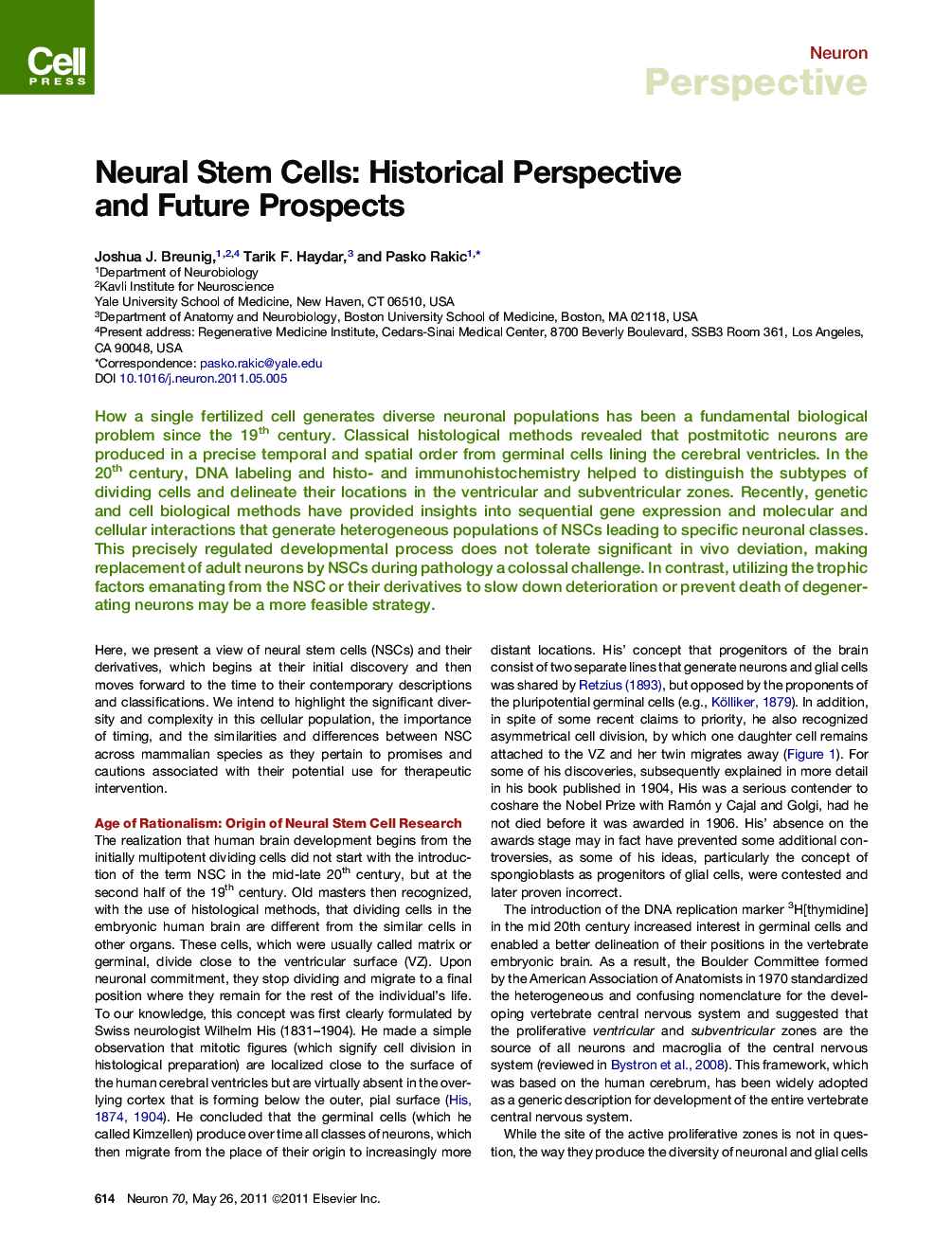| Article ID | Journal | Published Year | Pages | File Type |
|---|---|---|---|---|
| 4321758 | Neuron | 2011 | 12 Pages |
How a single fertilized cell generates diverse neuronal populations has been a fundamental biological problem since the 19th century. Classical histological methods revealed that postmitotic neurons are produced in a precise temporal and spatial order from germinal cells lining the cerebral ventricles. In the 20th century, DNA labeling and histo- and immunohistochemistry helped to distinguish the subtypes of dividing cells and delineate their locations in the ventricular and subventricular zones. Recently, genetic and cell biological methods have provided insights into sequential gene expression and molecular and cellular interactions that generate heterogeneous populations of NSCs leading to specific neuronal classes. This precisely regulated developmental process does not tolerate significant in vivo deviation, making replacement of adult neurons by NSCs during pathology a colossal challenge. In contrast, utilizing the trophic factors emanating from the NSC or their derivatives to slow down deterioration or prevent death of degenerating neurons may be a more feasible strategy.
